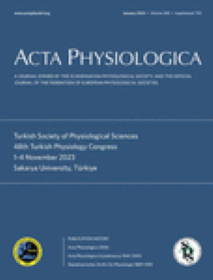Extracellular acidification increases uterine contraction in pregnant mouse by increasing intracellular calcium
Abstract
Aims
As uterine extracellular pH decreases during the ischemic conditions of labor, but its effects on myometrial contraction are largely unknown, there is a need to elucidate its physiological effects and mechanisms of action. Furthermore, it is not known if any of the effects of extracellular acidification are affected by pregnancy, thus we also determined how gestation affects the response to acidification.
Methods
Nonpregnant, mid-, and term-pregnant myometrial strips were obtained from humanely killed mice. Contractions were recorded under spontaneous, depolarized, and oxytocin-stimulated conditions. The extracellular pH of the perfusate was changed from 7.4 to 6.9 or 7.9 in HEPES-buffered physiological saline. Intracellular pH was measured using SNARF, and intracellular calcium was measured using Indo-1. Statistical differences were tested using the appropriate t-test.
Results
Extracellular acidification significantly increased the frequency and amplitude of spontaneous contractions in pregnant, but not nonpregnant, myometrium, whereas alkalinization decreased contractions. Intracellular acidification, via Na-butyrate, transiently increased force in pregnant tissue. Intracellular pH was gradually acidified when extracellular pH was acidified, but extracellular acidification increased contractility before any significant change in intracellular pH. If myometrial force was driven by oxytocin or high-K depolarization, then extracellular pH did not further increase force. Intracellular calcium changes mirrored those of force in the spontaneously contracting pregnant myometrium, and if calcium entry was prevented by nifedipine, extracellular acidification could not induce a rise in force.
Conclusion
Extracellular acidification increases excitability, calcium entry, and thus force in pregnant mouse myometrium, and this may contribute to increasing contractions during labor when ischemic conditions and acidemia occur.

 求助内容:
求助内容: 应助结果提醒方式:
应助结果提醒方式:


